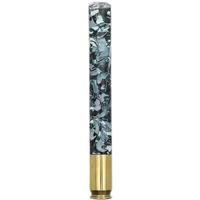I tend to agree with Simenon on this.
Somewhat related is this experiment, done back when some folks were into vacuum sealing their tobacco. Some interesting results:
http://web.archive.org/web/20070807071030/http://agingfaq.nocturne.org/articles/tsmith-2001-07-25.txt
...and a couple of more quotes
I have observed, however, that once the tin is opened, the tobaccos within these ancient tins seems to fall apart rather quickly, losing their essence and power as the days go by. They need to be smoked quickly, as just as aged Bordeaux and Burgundy fall apart quickly after opening the bottle. I once was fortunate enough to attend a wine tasting that included an 1875 Chateau Mouton Rothschild. The flavor was there at first but was pretty much "gone" after 15 minutes. Old Virginias parallel old wines, but fortunately they last a lot longer after being exposed to air.
Fred Hanna, 2004-11-05
When I open an old tin, I tend to want to smoke it fairly quickly, as I think there is some degradation of an aged tobacco that begins as soon as the seal is broken. To me, the finest bowl from an old tin is the first. If I'm not going to smoke it fairly quickly, I'll transfer the entire tin to a bail top jar, or bag the contents, and put it in a mason jar. This will keep the tobacco in good shape for quite a while. But, still, every time that lid is off, some of the bloom comes off the rose.
GL Pease, 2005-08-20
Somewhat related is this experiment, done back when some folks were into vacuum sealing their tobacco. Some interesting results:
http://web.archive.org/web/20070807071030/http://agingfaq.nocturne.org/articles/tsmith-2001-07-25.txt
...and a couple of more quotes
I have observed, however, that once the tin is opened, the tobaccos within these ancient tins seems to fall apart rather quickly, losing their essence and power as the days go by. They need to be smoked quickly, as just as aged Bordeaux and Burgundy fall apart quickly after opening the bottle. I once was fortunate enough to attend a wine tasting that included an 1875 Chateau Mouton Rothschild. The flavor was there at first but was pretty much "gone" after 15 minutes. Old Virginias parallel old wines, but fortunately they last a lot longer after being exposed to air.
Fred Hanna, 2004-11-05
When I open an old tin, I tend to want to smoke it fairly quickly, as I think there is some degradation of an aged tobacco that begins as soon as the seal is broken. To me, the finest bowl from an old tin is the first. If I'm not going to smoke it fairly quickly, I'll transfer the entire tin to a bail top jar, or bag the contents, and put it in a mason jar. This will keep the tobacco in good shape for quite a while. But, still, every time that lid is off, some of the bloom comes off the rose.
GL Pease, 2005-08-20














 :
: